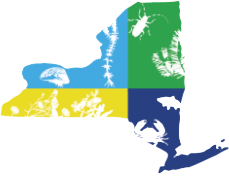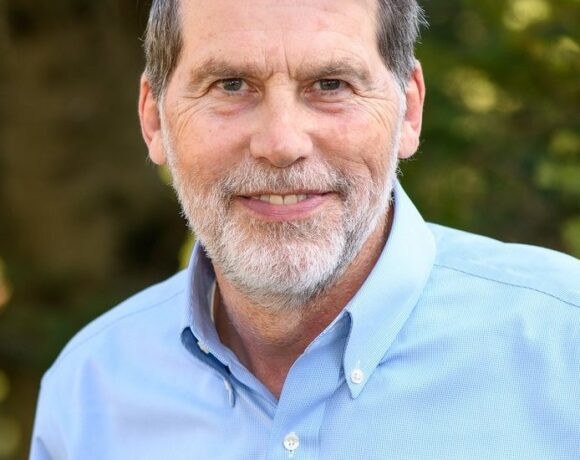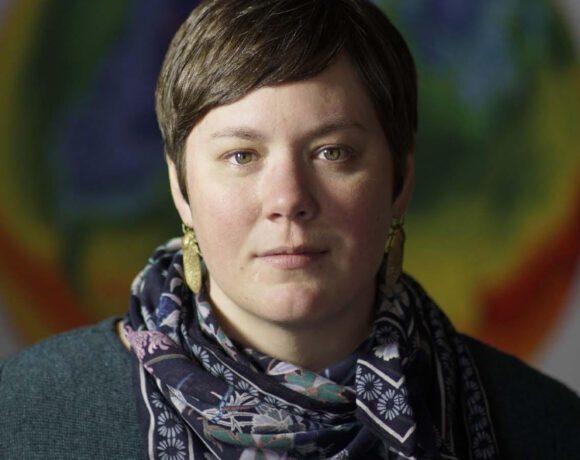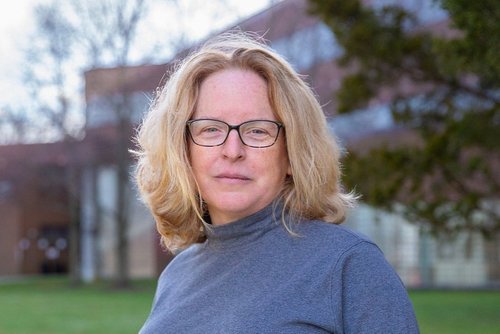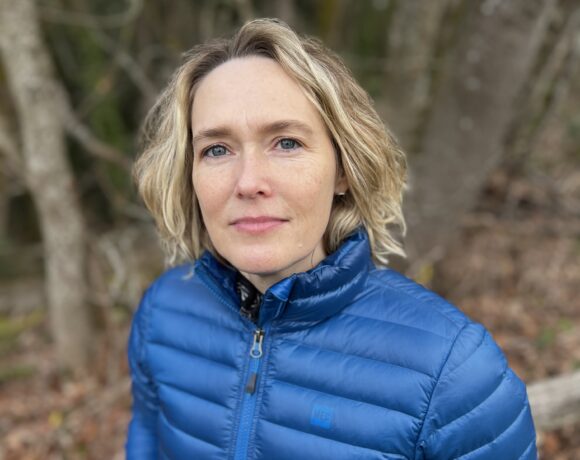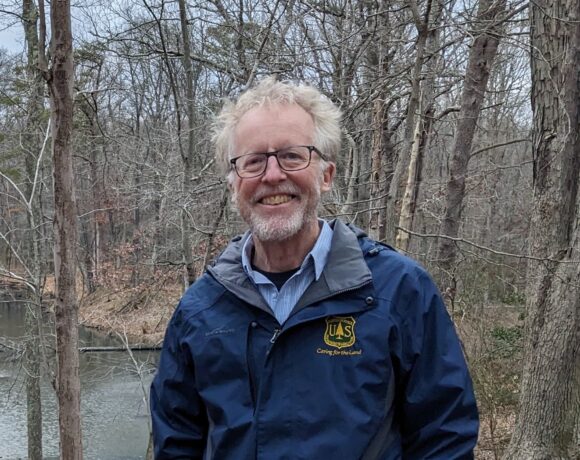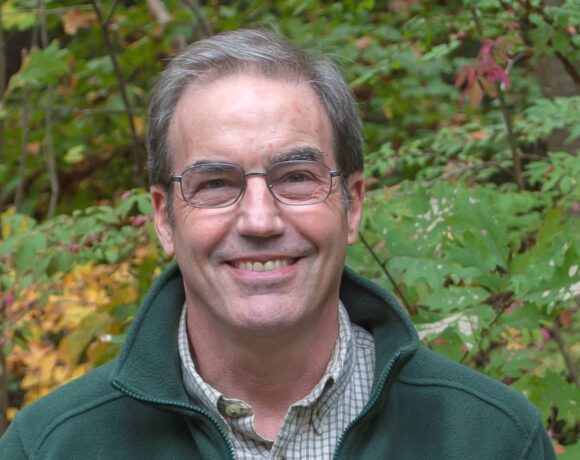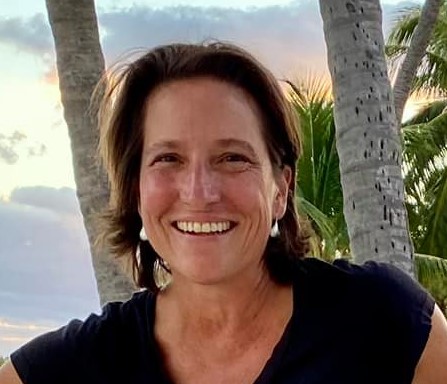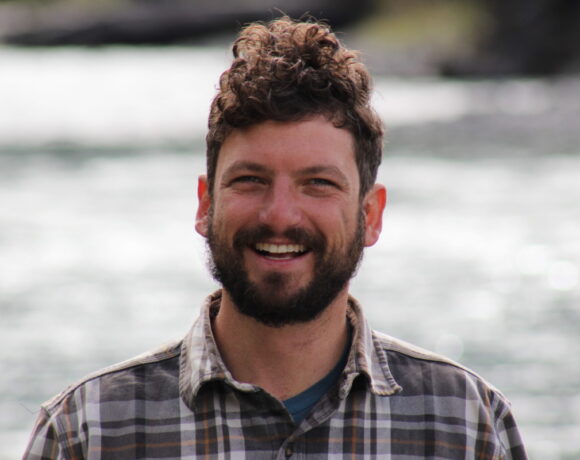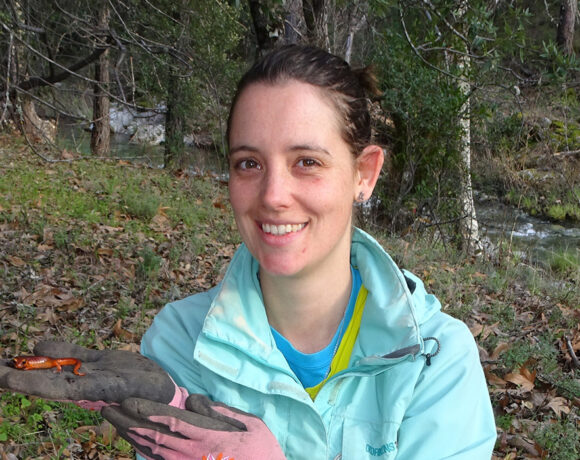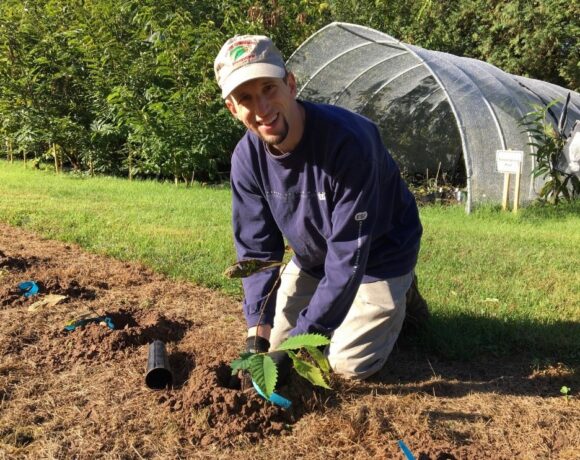This month, NYISRI interviews Dr. Stacy Endriss, an evolutionary ecologist who explores creative approaches for improving how we assess the impacts of invasions and their management.
What kinds of research questions related to invasive species or natural resource management have you recently asked or are you currently asking?
I coproduce research with land managers to better understand the impacts of invasive plants and of invasive plant management, especially the impacts of biological control. Over the past four years, I have addressed these questions in three different systems: purple loosestrife, invasive Phragmites, and Japanese knotweeds. My research also improves our understanding of how, and even whether, plants can adapt to novel shifts in insects, climate, and other factors, which is critical to making management decisions in today’s world of rapid environmental change. My research therefore follows three overlapping interests: 1) local adaptation of plant populations, 2) plant-insect interactions within the context of biological control, and 3) measuring the impacts of invasions and invasive plant management.
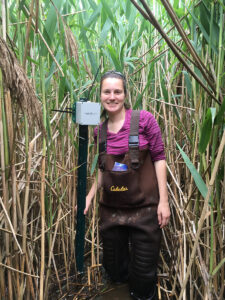 What are the basic methods you are using to answer your research questions?
What are the basic methods you are using to answer your research questions?
I study invasive plant evolution and ecology using short-term, outdoor potted plant experiments as well as large-scale observational field surveys that span multiple decades and continents. A recent field collaboration that shows great promise was a partnership effort with land managers across the East Coast, the US Fish and Wildlife Service, and the Cornell Lab of Ornithology. Specifically, we showed that we can use stationary recorders to monitor how the calls of birds, frogs, toads, and insects (i.e., species we want to protect) change in response to invasions and our efforts to manage those invasions.
Do you have a personal story or path that led to your interest in this research?
My parents instilled a love of nature, writing, and curiosity in me from a young age, but growing up I never envisioned myself as a scientist; much less a scientist focusing on invasive species and natural resource management. However, during college I had the opportunity to get my hands dirty and dive into the world of research. I found these opportunities to be infinitely more engaging than anything I learned in the classroom. Once I discovered my love for research, I knew I wanted to conduct research that mattered. This made pursuing research on invasive species impacts and invasive species management an easy decision. I remember one experience that I found especially meaningful. I was tromping around in a stand of invasive Phragmites collecting data for my first research position, when a group of elementary-school students went floating by in canoes. I still remember the excitement in one of the girl’s voices as she yelled: “look—a scientist!”. Until that very moment, I hadn’t seen myself as a scientist, but that moment of self-realization was when I realized that I had found my passion that I wanted to pursue as my career.
What’s the most important thing about your research for stakeholders, managers, or policy makers to know?
Understanding the impacts of both invasions and of invasive species management is critical for informing effective management. However, despite important progress towards understanding these impacts, we still often lack the site-specific understanding needed to inform local management decisions. I hope that my research will help to fill this knowledge gap and will help scientists, managers, and funders empower each other to overcome traditional challenges and hold each other accountable to an evidence-based framework on invasive species management.
What do you hope the long-term impact of your work will be?
I recognize that land managers are often expected to do it all: collect evidence of the impacts of invasions, make management decisions, implement invasive species control, and understand the impact of those control actions. I hope that my research will help better support land managers who have limited time and resources by developing (and helping collect data on) more efficient and effective metrics for assessing the impacts of invasions and of their management. Such work is critical to improve management success and to defend the practice of invasive species management more broadly.
Stacy will be teaching and conducting research at the University of North Carolina at Wilmington starting this Fall (2022). NYISRI and the Blossey Lab wish her well on her new chapter!
Read her recent publication on the eco-evolutionary theory of plant invasions:
https://doi.org/10.1111/eea.13195
For more about Stacy’s research, visit:
Read more researcher spotlights:

